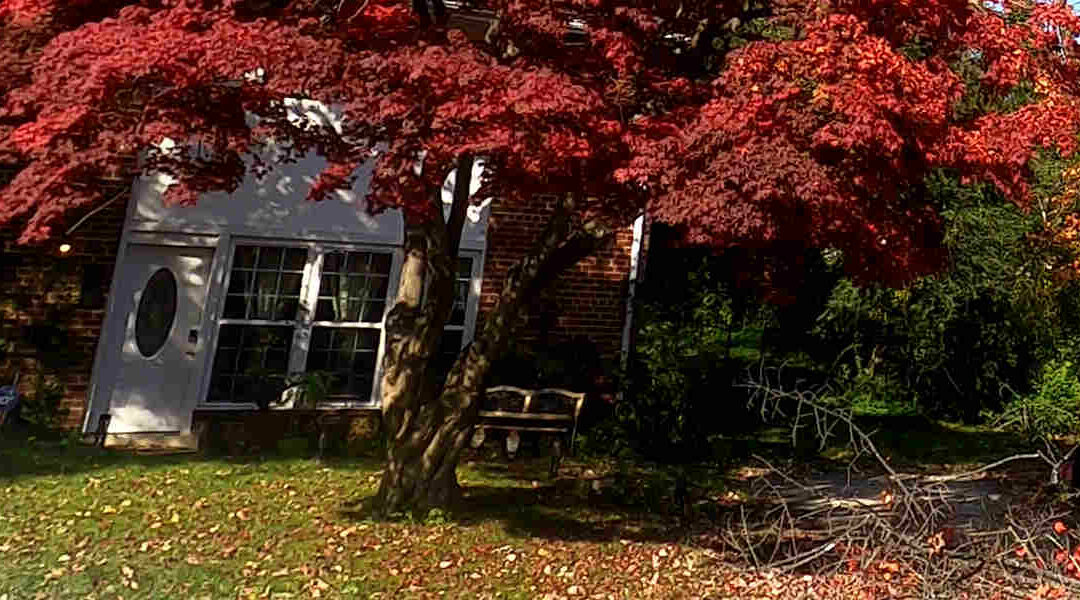Why do leaves fall off trees? The answer depends on the species of tree and the time of year. For example, deciduous trees naturally lose their leaves in autumn, but evergreens shouldn’t.
In this post, your specialist arborist services in Alexandria, VA, explain this phenomenon.
Why Leaves Change Color
Learning how trees grow is a fascinating endeavor. First and foremost, photosynthesis is one of the most interesting processes happening within the leaves. During this phase, the tree converts sunlight into energy through a series of chemical reactions.
During spring and summer, deciduous trees produce many green leaves so they can store as much energy as possible for the upcoming winter. Chlorophyll in the leaves causes that telltale green color and is how the tree collects as much sunlight as possible.
However, as fall approaches, the tree starts to change gears. By now, it has enough energy for the coming winter and focuses more on conserving fuel. That’s when it stops producing chlorophyll, and the leaves start to change color as other chemical components become more dominant.
These chemicals include yellow carotenes, which shine through once the chlorophyll subsides. Then, the warmer the weather, the more anthocyanins the tree produces, bringing red to the fore. With so many chemical changes, the leaves in autumn may be a vibrant mix of light green to bright red and yellow.
Leaf Drop
So, why do leaves fall off trees after changing color? The leaves grow from the abscission layer in the bark (the part it sheds). The abscission cells act as a conduit for nutrients and moisture, feeding the leaf and drawing the energy it produces back into the branch for storage.
When the weather begins to cool and chlorophyll production slows, the tree reduces the amount of auxin it produces. This hormone supports the abscission layer and strengthens the bond between the leaf and the branch. Eventually, a gust of wind detaches the leaf, and it flutters away, leaving behind only a leaf scar on its branch or twig.
Why Do Trees Lose Their Leaves?
Deciduous trees lose their leaves for several reasons, most of which center on resources. Empty branches are useful during the coldest time of the year because:
- Not supporting leaves means that the tree doesn’t need to use as much energy.
- During winter, resources, such as rain, are scarce, and there’s less sunshine.
- Dropping leaves reduces the surface area from which moisture can escape.
- A lack of leaves reduces the tree’s wind resistance, making it stronger against gale-force winds.
- Snow during winter places strain on the branches. Without leaves, the tree has less weight to carry overall.
- The tree has stored sufficient energy during summer to survive winter without producing more.
Why Do Some Trees Not Undergo the Same Changes?
Why do evergreens not lose their leaves? Evergreens, like conifers, have needles and a high resin content. The resin protects the trees against wet, miserable weather so the needles can withstand the cold. The conifer shape also helps precipitation slide off easily.
With some trees, they can rapidly transport moisture out of individual cells, making them impervious to freezing. Conifers, in particular, can handle extremes of temperatures that might kill deciduous trees, making them popular in colder areas of Virginia.
Contact Our Team for the Right Tree Advice Today!
Why do leaves fall off trees? Is there anything else you need to know, like how to take care of your trees or handle yard cleanup efficiently? If so, Dos Amigos Tree Experts is your go-to team in Alexandria, Virginia, and the surrounding areas—call us at (703) 300-6103 today!


